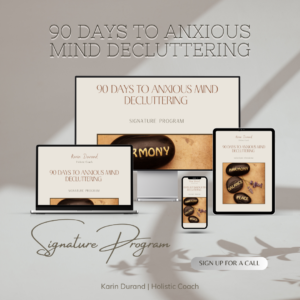Is there a general rule for the safe use of oils during pregnancy? Are pregnancy and essential oils compatible?
Although new research is constantly being developed on the effects of essential oils on the human body, unfortunately, these have not yet been sufficient to fully understand them. In the particular case of pregnancy, it has not yet been possible to determine the risk that the chemical components of the essential oil could penetrate the placenta. This is the biggest concern and controversy issue.
Tisserand has mentioned that, “Crossing the placenta does not necessarily mean that there is a risk of toxicity to the fetus; this will depend on the toxicity and the plasma concentration of the compound”.
On the other hand, in an article for the National Association for Holistic Aromatherapy (NAHA), Tony Burfield states, “It is probable that essential oil metabolites cross the placenta due to the intimate (but not direct) contact between maternal and embryonic or fetal blood”. He continues saying, “To my thinking the responsible attitude is to discourage the use of essential oils completely during the first few months of pregnancy”.
You may also like:
Essential Oils and Vibrational Healing
R.J. Buckle comments in his book, Essential Aromatherapy, that “the use of essential oils in pregnancy is a contentious subject, especially during the vital first 3-month period. It is extremely unlikely that a nightly bath containing a few drops of essential oils will cause any problems for the unborn child … There are no records of abnormal fetuses or aborted fetuses due to the “normal” use of essential oils, either by inhalation or topical application”.
Besides, Chrissie Wildwood mentions: “A common myth in aromatherapy is that massage oils containing essential oils such as clary sage, rose or even rosemary can cause a miscarriage and hence should be avoided throughout pregnancy.” Authors such as Ron Guba, Kurt Schnaubelt, and Wildwood have all pointed out that there have been “no recorded cases of miscarriage or birth defect resulting from aromatherapy massage using therapeutic applications of any essential oil”.

Ron Guba, on the other hand, points out that toxicity during pregnancy is “almost exclusively due to pregnant women taking large, toxic doses of essential oils, notably pennyroyal (rich in the ketone pulegone, which is metabolized to the highly toxic furan epoxide, menthofuron) and parsley seed (rich in the dimethyl ether apiol) in an attempt to abort the fetus”.
And Salvatore Battaglia shares this insight: “The judicious use of essential oils together with appropriate forms of massage by a skilled therapist can help ease the discomforts of pregnancy and provide a sense of nurturing that will comfort the mother at times she is likely to be feeling rather fragile”.
Final Words
(Basic Safety)
In the end, due to the lack of accurate information concerning the toxicity of essential oils during pregnancy, it is best to adhere to general safety guidelines. In the opinion of Tisserand, the following essential oils should not be used during pregnancy: Wormwood, rue, oak moss, Lavandula stoechas, camphor, parsley seed, sage, and hyssop.
Essential oils that appear to be safe to use during pregnancy include: cardamom, German and Roman chamomile, frankincense, geranium, ginger, neroli, patchouli, petitgrain, rosewood, rose, sandalwood, and other nontoxic essential oils.
However, avoid the internal or undiluted application of essential oils throughout pregnancy, unless under the guidance of a qualified aromatherapist or other healthcare practitioner trained in aromatic medicine.
Essential Oils to Avoid throughout Pregnancy, Labor, and while Breastfeeding
In the following table you will find a list of some essential oils that, according to Tisserand, should be avoided in case of pregnancy, labor and breastfeeding.
Essential Oil (Latin Name) |
|---|
| Star Anise (Ilicium verum) |
| Aniseed (Pimpinella anisum) |
| Basil ct. estragole (Ocimum basilicum) |
| Birch (Betula lenta) |
| Blue Cypress (Callitris intratropica) |
| Camphor (Cinnamomum campora) |
| Fennel, sweet (Foeniculum vulgare) |
| Ho leaf (Cinnamomum camphora) |
| Hyssop ct. pinocamphone (Hyssopus officinalis) |
| Mugwort or Wormwood (Artemisia vulgaris and A. absinthium) |
| Myrtle (Myrtus communis) |
| Parsley seed or leaf (Petroselinum sativum) |
| Pennyroyal (Mentha pulegium) |
| Sage (Salvia officinalis) |
| Spanish lavender (Lavandula stoechas ssp. stoechas) |
| Tansy (Tanacetum vulgare) |
| Tarragon (Artemisia dracunculus) |
| Thuja (Thuja occidentalis) |
| Vitex (Vitex agnus-castus) |
| Wintergreen (Gaultheria procumbens) |
Reference: Tisserand, R. and Young, R. (2014) Essential Oil Safety, 2nd Edition. Churchill Livingstone Elsevier.





